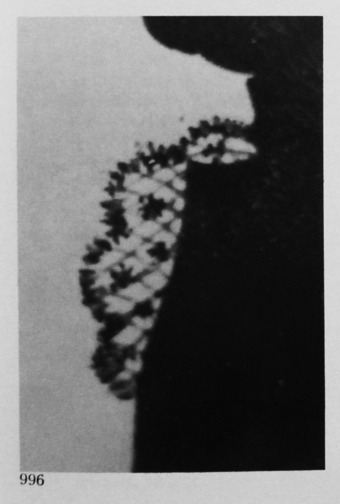Torond, Francis (McKechnie Section 2)
Recorded by Mills, Jackson (Dictionary) and the other authorities. Torond's early career is obscure. Coke mentions (Confessions of an Incurable Collector) that in c. 1914 he met a decorator who was Torond's grandson and stated that his grandfather died, aged sixty-nine, on 12 June 1812. Torond must therefore have been born in c. 1743, the date of his birth given by Jackson. Until recently, all writers on the silhouette agreed that Torond did not begin work as a profilist in London until 1780. Mr F. Gordon Roe, however, who owns the copy of Long's British Miniaturists which formerly belonged to Long himself, found in it a note, in Long's handwriting, whose import he discusses in Women in Profile. This note suggests that Torond in fact started work in London several years earlier than 1780. Mr Roe quotes from Long's note an excerpt from an advertisement by Torond in the Daily Advertiser of 11 January 1776: `Drawing, Painting, Etching & Engraving taught by Torond at his Academy 18, Well[s] St, Oxford St.'
In the light of Mr Roe's discovery (and of my own conviction, on the evidence of the costume worn by some of Torond's sitters) that the artist must have produced much of his work before 1780, an examination of the rate books for St Marylebone during the relevant period yields some interesting information. The entries for 18 Wells Street, Marylebone, give the following details about the identities of the ratepayers for this address during the years 1775-88: 1775, Ann Meahaney; 1776, John Torand [sic]; 1777, John Torrand [sic]; 1778-85, Francis Torand; 1786, Francis Torand (there is a note by the rate collector, `Going, nothing yet', which no doubt indicates an outstanding debt); 1787, some allowance noted for the house being empty at Christmas; 1788, Philip Buckingham.
These entries in the rate books throw fresh light on Torond. It has always been thought that he worked under an assumed name. The spelling of names before c. 1850 was variable (within phonetic limits), and there seems no doubt that Francis Torond, Torand, or Torrand were one and the same person. It would appear from this list that the house at 18 Wells Street was first owned (in 1776) by John Torand, in all probability the father of the artist, who may have died in 1777, whereupon his son became the householder. One of Francis Torond's advertisements, headed in French and referred to below, suggests the family had not long been in England. Francis Torond was certainly still living at Wells Street in February 1786, as an advertisement (quoted below) shows. What is especially interesting is that the Torond family were in poor financial straits by 1786. Until 1780 there had not been much competition in the field of profiles; by 1785, Mrs Beetham was producing them in quantity in London, and other lesser-known artists were following suit.
Foskett and Long mention that, apart from his activity as a profilist, Torond also painted religious paintings and miniatures in colour; perhaps he painted some of these before he started to paint silhouettes. Moreover, Torond did not live and work only in London. Like other profilists, he is known to have visited Bath and it is just possible that he visited Exeter. And, although most of his many trade labels on silhouettes give his address at 18 Wells Street, it seems that at certain periods he had studios at other London addresses, also given on his trade labels and cards.
In her Dictionary, Jackson refers to a bust-length profile by Torond of a woman with high-dressed hair, bearing his trade label with an address at 3 Princes Street, Leicester Square (now Lower Wardour Street), owned at the time by a Mrs A. M. Walker of Witham, Essex. The sitter's high-dressed hair suggests a date in the late 1770s, some time before Torond is known to have left 18 Wells Street. The contemporary rate books for Leicester Square do not mention Torond, which indicates that he was only a tenant at 3 Princes Street, where he probably rented a studio for a short time. Nor is there any mention of Torond in the rate books for St James's, Westminster, which cover Berwick Street, Soho, an address given on three trade labels of Torond in the Banks Collection in the British Museum. One label is dated 1790 and describes Torond as a drawing master. As no profile by Torond bearing this label, nor any profile by him which appears from the sitter's costume to have been taken as late as 1790, has been discovered, it must be concluded that by this time Torond had been forced by competition in the field of profiles to work only as a drawing master. He had probably ceased painting profiles even earlier, since Trade Label No. 6, dated 1786 and used at 18 Wells Street, does not mention silhouettes.
Summarising the course of Torond's career as a painter of black profiles, we can say that he was working at least as early as 1776, and possibly not after 1786, the year in which he left Wells Street, apparently in poor financial circumstances. After this year he worked chiefly as a drawing master, and perhaps in other fields also.
Coke mentions (op. cit.) that Torond's grandson gave him copies of a number of his grandfather's advertisements (Jackson, in her Dictionary, mentions twenty of these). Coke gleaned from these advertisements that, while he was in Bath, Torond painted a profile of the Duke of Northumberland and ' "likewise a full-length of JOHN STANLEY, Esq. [d. 1786), Master of His Majesty's band of musicians," of which he sold copies to all comers "at Half-a-crown and Five Shillings the Likeness." ' One of these advertisements, said by Coke to have been issued in 1784 from Torond's Wells Street address, was headed 'LES PORTRAITS EN PASSANT'; another mentions a profile of Lunardi, the pioneer of ballooning, taken in 1784. A copy of another of Torond's advertisements is in the series of volumes of early press cuttings in the library of the Victoria and Albert Museum, London (volume 2, page 305). It is dated February 1786, and the text is as follows:
Striking Likenesses, and a duplicate gratis, at 2s. 6d each —in clare-obscure, 5s — full-lengths 10s 6d. each figure. Mr. TOROND respectfully informs the Nobility, Gentry, and others, that he takes the most perfect Likenesses on an entire new plan of his own, which meets the approbation of every one who honours him in sitting, as he is allowed to take a correct resemblance from Nature. They are particularly convenient for persons coming to town, or going abroad, as they may be accommodated with their own, or relations, or favourites' likenesses, within 1 hour at No. 18, Wells Street, opposite Margaret Street, Cavendish Square.
Where the Likenesses of five or six hundred of the most distinguished personages that have patronized the above may be seen.
Please to apply in time as Mr. Torond has various engagements in and out of Town.
NB. Ladies and Gentlemen who have shades by them of living or deceased friends may have them copied to any size for Furniture, Bracelets, Lockets or Rings.
By clare-obscure Torond meant chiaroscuro. He must have been referring to the bust-length profiles which he painted in detail, with some use of pencil, which are discussed below and some of which are illustrated. It is interesting that he offers to copy `shades' for clients, in any size, for jewellery pieces and for furniture. He may have executed such pieces for trinket boxes, work boxes, and other small items of jewellery (though none from his hand have been identified), as well as for painted side tables or commodes (though I have seen no surviving piece of furniture bearing a black profile). 922, 923
It is only to be expected that an artist who taught drawing and painting, and practised engraving, would be highly accomplished. Torond's full-length silhouettes (most of which he painted on rather thick laid paper, that is, paper with a ribbed texture) are probably his finest and best known works. As well as a few examples which are in private possession, there are in the Victoria and Albert Museum two very fine examples of Torond's full-length work, both conversation pieces and both executed in a similar style. The finer of the two is Mr and Mrs Smith of Hailsham with Aunt Everard. Measuring 16 x 24 in., it is painted entirely in Indian ink, with a verve and precision of brushwork which could only be achieved by an outstanding artist. In some parts of the profile the ink is thinned, to produce a wash against which fine and accurate strokes are placed to show such detail as the laces falling from the women's head-dresses, the accessories on the table, the elaborate materials of the petticoats under the 'open robes', and the hands and arms of the sitters. Each detail is painted with exactness: three layers of wash can be seen on the painting of the bird outside the window to the right of the picture, and, with strong magnification, it can be seen that not a single unnecessary stroke has been made. The pose and painting of Mrs Smith's dog is similarly perfect. Magnification also shows some slight peeling, which is also evident on some of the artist's bust-length profiles. It is possible that parts of this piece were painted with a quill: that is, the fringing on the ‘looped curtain' which forms part of the background and some of the finer detail on the ladies' dresses. The whole piece is painted on fine laid paper, and framed in giltwood. 912
The other fine conversation piece in the Victoria and Albert Museum is the often illustrated The Birthday Party, which was painted later (c. 1783). Measuring 161/4 x 201/4 in., this is smaller than the other piece and is painted with less detail. It appears to have been folded up at some time. The petticoats revealed by the older lady's dress are painted with a little less dash than those of the ladies in the Smith family. Again, the appearance of the detail on this dress suggests the use of a quill. Thinning of the ink is shown in the deeper shadow of the laces on the same lady's head-dress, and on the unfilled parts of the decanter and glasses, but the hands are painted in solid Indian ink, and the whole piece does not show quite the brilliance of execution seen in the Smith group. One group by Torond, of the Cave family, is illustrated in Chapter Four. The attractive designs of the Hepple-white chairs shown in these groups add much to the general effect. 915 99
Mr J. A. Pollak owns a fine full-length silhouette by Torond of a seated woman painted in c. 1780. Earlier than The Birthday Party, it is of the same calibre as the Smith group. It would seem that Torond painted his finest full-length silhouettes before 1781, using the looped curtain' technique which he seems to have abandoned later. 919
Single standing figures, such as Wellings favoured, were rarely painted by Torond. Mention of Wellings leads me to consider a general comparison between the styles of the two artists. An unsigned group profile by Wellings, who began work a little later than Torond, can easily be identified by the difference in the density of the black, for Wellings seems to have used black water-colour, possibly with the addition of a little Chinese white to secure good cover, while Torond's Indian ink stands out far more clearly in its black density. Moreover, the slight peeling which I have mentioned does not appear at present on water-colour examples as it does on those painted in Indian ink, unless gum arabic was used. One might also note that Torond does not show much detail on the main body of full-length profiles, whereas Wellings painted in full, for instance, the buffon and bosom handkerchief styles, and the shape of the collars and lapels of men's coats of the 1780s. Wellings worked on laid paper with a coarser line than the paper used by Torond.
Torond does not seem to have used pencil on his full-length work.
Of Torond's bust-length profiles, as of his full length profiles, those painted before 1780 are of higher quality than those painted thereafter. A comparison of two profiles which I have illustrated (probably taken in c. 1785) with earlier examples (also illustrated) will bear out this statement.
Most of Torond's bust-length silhouettes are painted on laid card. Some examples are painted, like the full-length work, with little or no detail on the main body of the profile, but with detail outside the main image rendered with accurate brushwork in Indian ink. The lace falling from the tall head-dresses worn by women in the late 1770s is shown by diagonal or horizontal lines which build up the shape of the material, while the pattern is shown by tiny crosses, or by small groups of dots scattered on the framework of lines. In some cases men's shirt-frills are shown by a criss-cross network of fine lines; in others, by tiny crosses. Little or no detail is shown in the painting of hair, since Torond was painting `shades'. The brownish colour which some earlier commentators have noted on Torond's profiles may be the result of the ink having been thinned somewhat before application, so that it has faded over the years.
After c. 1780, Torond seems to have adopted a different style for bust-length work — namely, in his clare-obscure profiles (mentioned in the advertisement quoted above, and painted, as the term implies, in light and shade). In the silhouettes of Mr and Mrs Molesworth, for example, much more detail is shown than in earlier work, both thinned ink and pencil being used to secure an effect of transparency. The bust-line terminations of Torond's profiles vary, though it can be noted that one example shows a suggestion of a double-loop finish. 920 921
The frames of Torond's bust-length silhouettes of the 1770s are of the oval turned ebonized wood variety. Examples dating from after 1780 have survived in oval frames of giltwood, sometimes with added beading (much like those used by Mrs Beetham at the time).
Among the illustrated examples of Torond's profiles in the plain black style are some profiles of members of the Drewe family, of Grange, Broadhembury, Devon. These can be compared with two silhouettes (by Torond) and a portrait of women of this family, illustrated in Chapter Six. The relevant details of the family history and relationships are given in the captions. 916 918 162 163 182
As for Torond's skill and style as an engraver, we have no reason to doubt that the three trade plates which I have illustrated, on which he advertised his services as a drawing master and engraver (one is engraved in line, the others were produced by soft ground etching), were his own work.
Torond is known to have used five trade labels for his silhouette work. No. 1 is a small strip of white paper on which is stencilled in red, `Torond, No. 18, Wells Str., London.' This appears to have been used 1776-80. No. 2 (illustrated) is a black stencil (with the same wording), which was applied directly on to the card. This was used 1780-86, and I have only seen it on bust-length examples. No. 3 (illustrated) I have seen only on post-1780 examples; it is very small (only 3/4 in. wide), and was placed on the front of some of his groups, in the centre below the whole picture. It has an oval surround in the form of small beading. No. 4, recorded by Jackson, was used in the same way as No. 3 and is similar, except that it lacks the surround. No. 5, recorded by Jackson, reads as follows: 'Likenesses taken singly or in groups in the genteelest taste by Torond, No. 3, Princes Street. Drawing and Painting taught at home and abroad.' This has a dotted ornamental surround. The only clue to the date of this label is Jackson's brief description of the silhouette which bears it, referred to above.
Trade Labels Nos. 6-8 (all illustrated) refer to Torond's work as a drawing master. No. 6, the line-engraved example mentioned above, is dated 1786 and bears the Wells Street address; this seems to indicate either that silhouette work was less in demand, or that it had come to a standstill. No. 7 (bearing the address 7 Berwick Street, Soho) is dated 1790. No. 8, engraved by soft-ground etching, may have been used a little later, perhaps 1790-91.
Ills. 99, 162, 163, 912-930, 996, 999
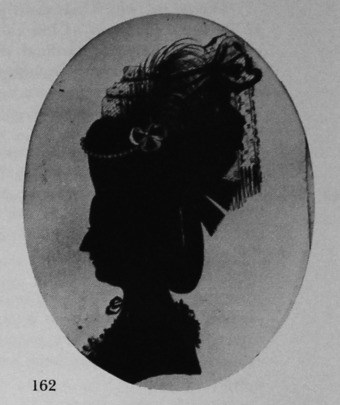
Mrs John Fownes Lutterell, of Dunster Castle, née Mary Drewe, daughter of Francis Drewe of ‘Grange’, Broadhembury, Devon, and Mary Johnson, his second wife.
Silhouette by Francis Torond, c. 1777.
(See also 163 and 182.)
Other silhouettes of members of the Drewe family, by Torond, are illustrated in Section Two.
costume dating points
The extremely high, decorated hair-style, festooned with feathers, bows, pearls and laces.
The banging chignon.
The ribbon necklace, tied in front.
The frilled neck-line of (probably) a short polonese, worn with a handkerchief.
Author’s collection
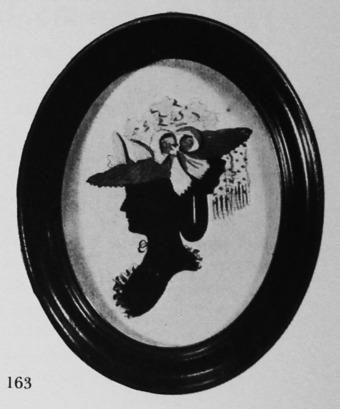
A woman of the Drewe family, probably Mrs Thomas Drewe, née Betty Incleden.
Silhouette by Francis Torond, c. 1777
costume dating points
The banging chignon.
The hat worn with a forward tilt and having a soft crown sufficiently high to accommodate the built-up hair of the time.
The top of (probably) a short polonese of the 1770s, worn with a handkerchief (alternatively, the conspicuous frill of some other type of dress).
Author’s collection
SECTION TWO
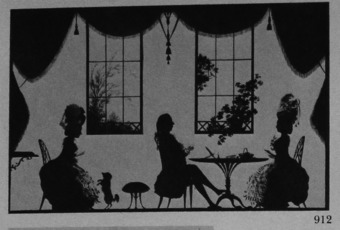
Mr and Mrs Smith of Hailsham with Aunt Everard
Group of silhouette painted on thick laid paper
1777
16 x 24in./407 x 610mm.
Torond painted this extremely fine group during his earliest and best period. The ‘looped-curtain’ technique is worth noting.
Crown Copyright. Victoria and Albert Museum, No. P11-1956
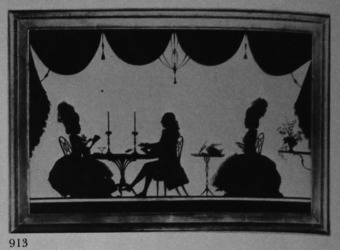
Group of unknown sitter
Group silhouette painted on thick laid paper
? 1777-78
The provenance of this silhouette, which is typical of Torond, is unknown. The furniture is similar in style to that shown in Torond’s other group silhouettes; the presence of a bracket carrying flowers, and of other accessories, is a feature of his style.
The women are wearing the ‘banging chignon’ and high hair-style of the period.
From a photograph in Graham Thomas collection
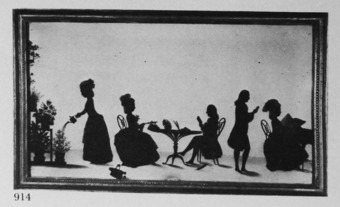
The Parminter family
Group silhouette painted on thick laid paper
c. 1780-82
18 x 33in./458 x 840mm.
The Parminter family, represented in this well known silhouette, lived at ‘A la Ronde’, Exmouth.
By courtesy of Miss Stella Tudor
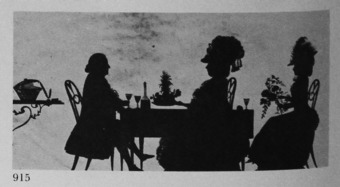
The Birthday party (sitter unknown)
Group silhouette painted on thick laid paper
c. 1783
16¼ x 20¼in./413 x 515mm.
This group silhouette is one of Torond’s best known pieces.
Crown Copyright. Victoria and Albert Museum, No. P 7-1936
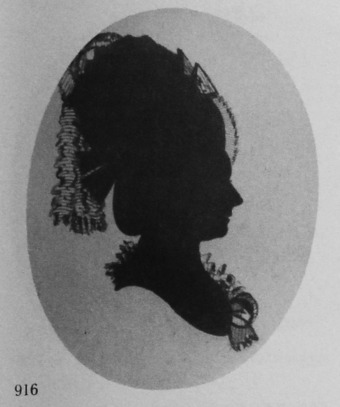
Mrs Richard Drewe
Silhouette painted on laid card
c. 1777
3¾ x 2¾in./96 x 70mm.
Trade Label No. 1
Frame: oval, stained black wood
Mrs Drewe, née Hannah Spencer, was the wife of the sitter in 917, whom she married in Exeter in 1772. The Drewe’s only child, a daughter, Harriet Maria, died in 1792 at the age of fifteen and was buried in Broadhembury.
Author’s collection
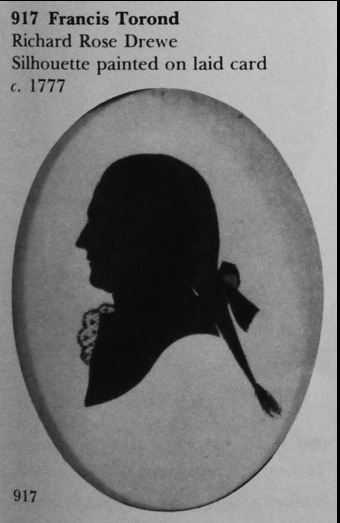
Richard Rose Drewe
Silhouette painted on laid card
c. 1777
3¾ x 2¾in./96 x 70mm.
Trade Label No. 1 (fragment)
Frame: oval, stained wood
Richard Rose Drewe (1742-1801) was the fourth son of Francis Drewe of ‘Grange’, Broadhembury, Devon, and his first wife Mary (née Rose).
A London linen draper, he was also Receiver General of Land Taxes for Exeter.
Author’s collection
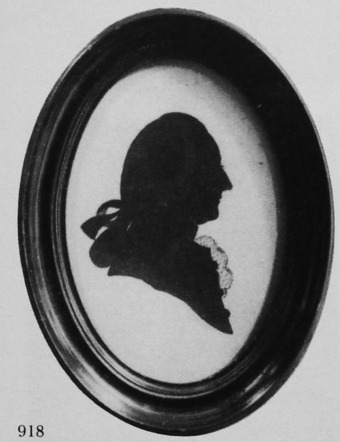
Francis Rose Drewe
Silhouette painted on laid card
c. 1777
3¼ x 2¼in./83 x 58mm.
Frame: oval, stained black wood
Francis Rose Drewe (1738-1801) was the eldest son of Francis Drewe of ‘Grange’, Broadhembury, Devon, and his first wife, Mary (née Rose).
Though this silhouette is smaller than Torond’s silhouettes of other members of the Drewe family, it is painted on the same type of laid card, and although the sitter (unlike the sitter in 917) is wearing a club wig, the painting of the ribbons is sufficiently similar in style to justify the attribution of this silhouette to Torond.
Author’s collection
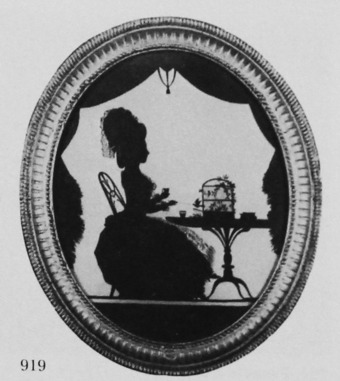
Unknown woman, with bird
Silhouette painted on paper
c. 1780
14½ x 12½in./369 x 318mm.
Frame: oval, giltwood, with decorative surround
This fine silhouette is one of a pair; the companion silhouette (of a man) bears Torond’s Trade Label No. 2.
J. A. Pollak collection
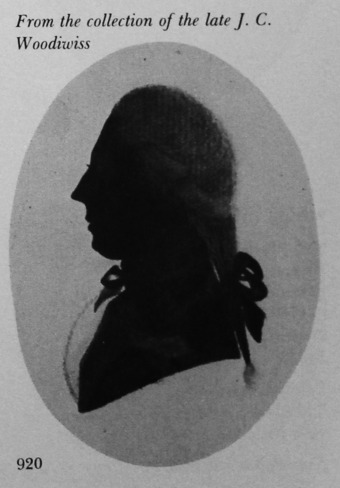
Richard Molesworth
Silhouette painted on laid card
? 1780
4 x 3in./102 x 77mm.
Trade Label No. 2
Frame: oval, beaded giltwood
Richard Molesworth, of the Pay Office, married Kitty Cobb (921) on 19 October 1780. This silhouette is an example of Torond’s clare-obscure style.
From the collection of the late J. C. Woodiwiss

Mrs Richard Molesworth
Silhouette ainted on laid card
? 1780
4 x 3in./102 x 77mm.
Trade Label No. 2
Frame: oval, beaded giltwood
Mrs Molesworth was the wife of the sitter in 920. This silhouette may have been taken on the sitter’s wedding day.
Like the silhouette shown in 920, this is an example of Torond’s clare-obscure style.
From the collection of the late J. C. Woodiwiss
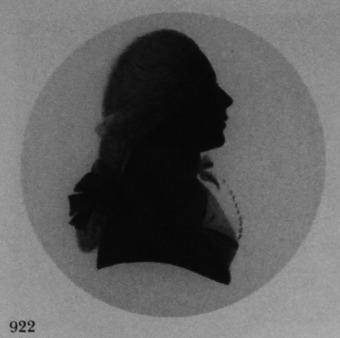
Unknown man
Silhouette painted on laid card
c. 1782-84
Diameter 3¾in./96mm.
Frame: pearwood
Painted in the clare-obscure style.
The date is suggested by comparison with the companion portrait (923).
J. A. Pollak collection
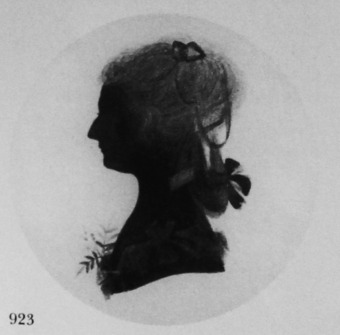
Unknown woman
Silhouette painted on laid card
c. 1782-84
Diameter: 3¾in./96mm.
Frame: pearwood
Painted in the clare-obscure style.
The sitter’s hair-style is not nearly as high as the styles worn by some sitters to Torond whose silhouettes have been illustrated in this Section and in Chapter Five: hence the suggested later date.
J. A. Pollak collection
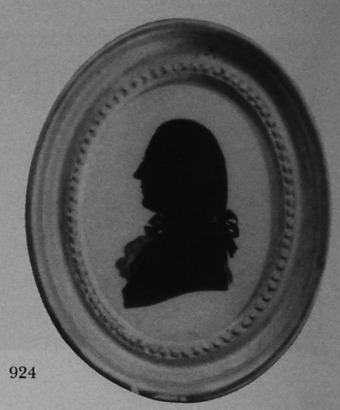
Arthur Shakespeare
Silhouette pained on laid card
c. 1784-85
4 x 3in./102 x 77mm.
Trade Label No. 2
Frame: oval, giltwood
The sitter came from a family in Lifton, Devon. In 1781, one William Gough was convicted of robbing Arthur Shakespeare of two guineas and was hanged on 16 July.
Author’s collection
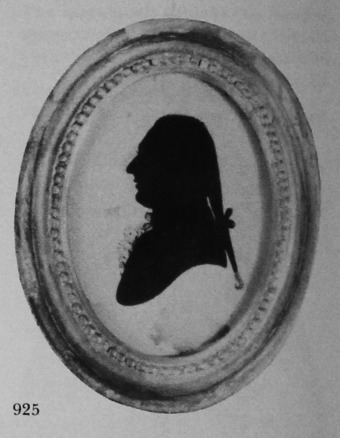
John Shakespeare
Silhouette painted on laid card
c. 1784-85
4 x 3in./102 x 77mm.
Trade Label No. 2
Frame: oval, giltwood
The sitter was probably the father of Arthur Shakespeare (924). The end of his pigtail is rendered in pencil.
Author’s collection
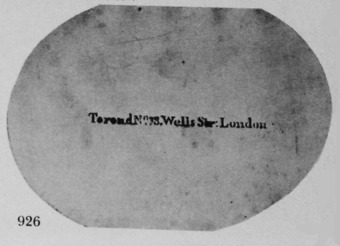
Trade Label No. 2 of Francis Torond.
Author’s collection
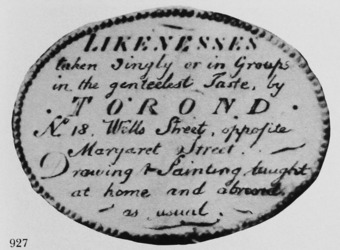
Trade Label No. 3 of Francis Torond.
Crown Copyright. Victoria and Albert Museum, No. P7. 1936
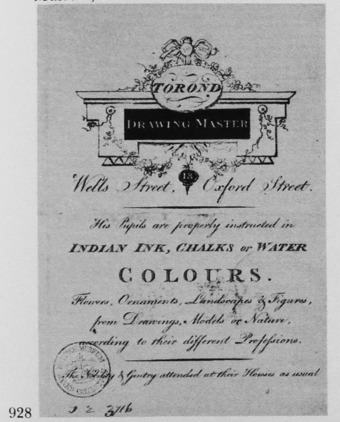
Trade Label No. 6, used by Francis Torond to advertise his service as a drawing master at 18 Wells Street, London.
British Museum, Banks collection
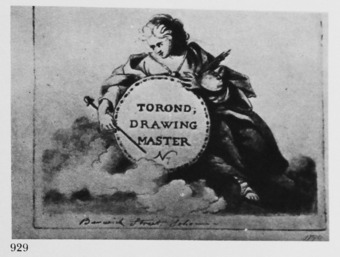
Trade Label No. 7, used by Francis Torond to advertise his service as a drawing master at 7 Berwick Street, London.
British Museum, Banks collection
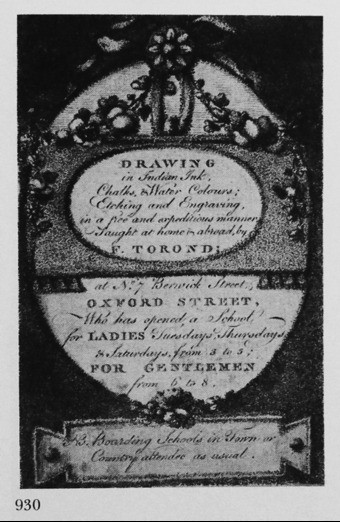
Trade Label No. 8, used by Francis Torond to advertise his service as a drawing master at 7 Berwick Street, London.
British Museum, Banks collection
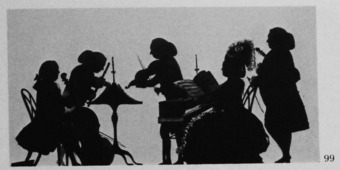
Detail from a silhouette of a woman by Francis Torond, showing the artist’s style of rendering frills and laces. (916)
